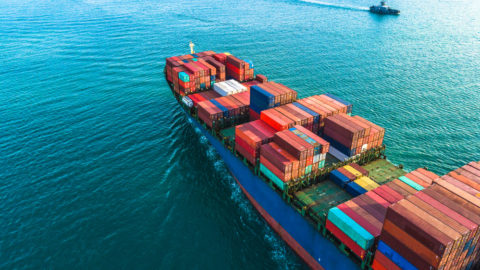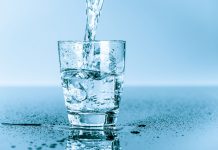This article is written by Lavish Sharma pursuing B.A LLB. (HONS.) from the Institute of Law Nirma University. This article discusses the National Waterways Act, 2016.
Table of Contents
Introduction
The key to boosting economic growth and, in effect, to alleviate poverty and foster sustainable development is a stable and effective transport system. The inland water transport system ensures both access, mobility and connectivity, and low environmental footprint and costs economic development at the grassroots. India is a land of rivers. It has a coastline of 7500 km long of nearly 14,500 km of navigable waterways. This offers enormous opportunity to build a cheaper and greener form of transportation. Yet at the moment there is just a relatively small amount of trade passing across these rivers and coastlines. Coastal shipping constitutes just 6 per cent and inland water transportation accounts for only 0.4 per cent of trade.
The National Waterways Act, 2016, was a significant milestone in the path of improving our inland waterways untapped potential. It was tabled in May 2015 by Transport and Shipping Minister of the present Central Government, Mr Nitin Gadkari. This Bill plans to convert 106 rivers and creeks across India into waterway canals, supposedly for the purposes of ‘eco-friendly transport’ of cargo, coal, industrial raw materials, and tourism.
Objective of enactment
The Bill’s statement of objects and reasons states that while inland waterways are regarded as a mode of transportation that is fuel-efficient, cost-effective and environmentally safe, it has earned less investment than roads and railways. Because inland waterways lag behind other modes of transport, a strategy for integrated construction of inland waterways has been developed by the Central Government.
Scope of the Act
Economic benefits provided to protected aquatic habitats include clean water for use and domestic usage, water suitable for the protection of public areas and sports fields, water suitable for agriculture and industry (food and materials production), preservation of soil fertility through flooding agricultural land, movement of water by irrigation, drainage and irrigation.
The government says the construction of waterways is our top priority. India currently has five inland waterways, though only three are active. India’s waterways became a neglected field owing to lack of attention and policy intervention. India is in the last place in this field in the World. In China, 47% of passenger and goods traffic is through the sea, in Korea and Japan, 43-44%, and in Europe, more than 40%. In India, it is just 3.3 per cent, of which inland rivers account for only 0.3 per cent. Waterways have the ability to revolutionize travel. It could contribute at least 2% of the country’s GDP. Waterways are safer than rail and path, they pollute less and have less injuries. The government also intends to launch seaplanes, water taxis, hovercrafts and floating hotels to link coastal towns to boost water tourism.
Issues and challenges
- The draft of the national waterways shall not be uniform at 2 meters throughout the year, as is required. Any of these waterways are seasonal and do not provide navigability during the year. Approximately 20 of the 111 national waterways identified have reportedly been found to be inviolable.
- Furthermore, all identified waterways require intensive capital and maintenance dredging, which could be resisted by the local community on environmental grounds, including fears of displacement, thus posing challenges to implementation. Water has important competing uses, too, videlicet. The need for life as well as for irrigation, power generation, etc. These could not be overlooked by local government/others.
- The exclusive jurisdiction of the Central Government is that of shipping and navigation on inland waterways declared to be ‘national waterways’ by an act of Parliament. The use/sailing of boats in certain waters is beyond the limits of the concurrent list or comes under the authority of the respective state governments.
- Because each riverine channel is special and faces different difficulties, independent research on the basis of a comprehensive micro-level analysis to determine the feasibility of each river must be carried out prior to implementation. An efficient network of waterways will entail the implementation of a well-coordinated plan on complementarity lines between the national network and other non-declared waterways, as well as between waterways and roads/railways. The strategy should take a close look at the various undercurrents, including competing uses/needs, possible local resistance, and should also work closely and in coordination with local governments to ensure the rapid and successful implementation of this important nation.
Key provisions of the Act
The National Waterways Act was passed by the Parliament in April 2016. It is major ratification since the bill calls for the introduction of a new law to recognize 106 more inland waterways since national waterways, in comparison to the five current national waterways. The Center receives the authority to control and establish inland waterways, which Parliament has proclaimed to be national waterways by statute, as provided in the The Inland Water Authorities Act, 1985.
The passing of the bill demonstrates the critical role of waterways in the economic growth of the country, which has remained a backburner for a long time. Equally significant is the fact that the Bill reflects the Centre’s consultative role in alleviating the regional governments’ concerns that the proposed legislation will infringe their privileges. Union Road Transport, Highways and Shipping Minister Nitin Gadkari made it clear that the announcement of the National Waterways will not in any way limit the privileges of state governments. This just encourages the construction of waterways for shipping and navigation by the Government of India. It will not infringe their rights to minerals and water, etc.
Why is it important to maintain waterways?
Social Value
Waterways have cultural and spiritual value for many people in Western Australia, especially Aboriginal people. They are essential to the traditions and spiritual beliefs of the Aboriginal group. They are connected to important food sources, such as waterfowl, tortoises, shrimp, rhizomes, bulbs and roots, as well as important trading routes and camping sites. Historically, waterways have become a focal point for adventurers and pioneers, and several towns and cities have been founded along rivers and estuaries on the basis of abundant freshwater supplies, secure anchorages and abundance of food, including fish. Waterways offer opportunities for leisure events such as bathing, boating and fishing, and foreshore areas offer space for biking, riding and meeting on social occasions. Waterways establish a sense of location and belonging for many residents, and are admired for their esthetic elegance within the environment.
Ecological Value
The inherent ecological value of the rivers provides a broad variety of marine fauna, such as fish, invertebrates (e.g. crayfish, crabs, snails, octopus, shellfish and macroinvertebrates), cetaceans such as dolphins, sea birds, frogs, reptiles (e.g. snakes, turtles and crocodiles) and sea rats. Waterways serve as refuges for species of desert fauna during times of drought and as routes for dispersal. Waterways also benefit a large range of aquatic and terrestrial plant habitats and ecosystem communities-see coastal and riparian trees, macroalgae and underwater turf.
Economic Value
Economic benefits given by safe aquatic environments include clean water for consumption and domestic usage, water suitable for the conservation of public areas and sports fields, water suitable for agriculture and industry (food and products production), preservation of soil productivity by the inundation of agricultural property, the flow of water across the irrigation process.
Important projects under the Act
Kalasa Bandhuri Project
The scheme includes diverting water from the Mahadayi Dam, the lifeline of Goa, to the Malaprabha Channel. The Kalasa Banduri project is aimed at providing drinking water to three major districts of northern Karnataka- Belagavi, Gadag and Dharwad- which have been parched in summer due to acute water scarcity. The Mahadayi River originates from a cluster of 30 springs in Bhimgad, Western Ghats, in the Belgaum district of Karnataka. Instead, it reaches Goa and eventually flows into the Arabian Sea. The state capital of Goa, Panaji, lies on the banks of Mandovi. Mahadayi Water Tribunal (MWT) award in 2018: 13.5tmcft of water was allocated to Karnataka, 24tmcft to Goa and 1.3tmcft to Maharashtra.
Jal Marg Vikas Project
The Jal Marg Vikas Project (JMVP) for Navigation Capability Expansion on National Waterway-1 (NW-1) is being introduced with the help of the World Bank. One of the major challenges for economically feasible and secure shipping on NW-1 is the low depth upstream of the Farakka dam owing to weak tributary discharges and the complicated hydromorphological characteristics of the Ganga River. The project will contribute to the reduction of logistics costs in the country and will provide an alternative mode of transport that will be environmentally friendly and cost-effective. The Inland Waterways Authority of India (Ministry of Shipping) is implementing this. The project envisages the development of fairways through a performance-based contract with a minimum guaranteed depth of 2.2 to 3 meters and a bottom channel width of 45 metres, bank protection works and navigation aid provisions. The States covered by the project are Uttar Pradesh, Bihar, Jharkhand, West Bengal. The scheme is scheduled to be finished in March 2023.
Advantages and disadvantages of the Act
Advantages
- A major shift in the country’s logistics scenario: it reflects a ready-built transportation network that can be utilized without any extra capital spending.
- The network requires no greenfield investment, but only an improvement/upgrading CAPEX(capital expenditures).
- Waterways will decongest paths, like highways, by pushing freight away. Waterways do not include land management issues, which have often been a critical problem, creating time and expense overruns in a variety of ventures.
- The substantial expenditure that India wants to develop its road/highway transportation network can be sustained by enhanced usage of waterways.
Disadvantages
- Environmental issues and concerns about livelihoods that may arise at a later stage.
- With rivers drying up, artificially sustaining water rates in river canals would be a problem in several ways.
- Inalienably, the construction of a navigable river will change the economies and the ecosystem of the river network.
- This put conflicting demands on the strained water volumes with current consumers, in particular farmers who need water for irrigation and demand for drinking water.
Critical analysis
It aims to develop these large-scale, commercial shipping and navigation networks in all of these 111 waterways india. Expected to realize the ability of freight and passenger transport, like tourism and cruise, to provide smooth communication at a lower per-unit cost and to make transport more efficient. The scheme, in its whole execution and service process, will create a sequence of forwarding and backward linkages with the promise of deep economic penetration. The multiplier impact of the investment and its linkages can result in a virtuous circle of all-round development.The National Waterways Act requires the Central Government to oversee these waterways with a view to the continuous and organized creation of shipping and navigation activities. Spread over the eastern, western, southern and central regions of the country, these waterways cover almost 15,000 kilometres across 24 states and two Union Territories.
These comprise the nation’s 138 river channels, creeks, estuaries and associated canal networks, which can be used as a way of moving passengers and freight throughout the world and to neighbouring nations. Waterways are also planned to be connected to the Eastern and Western Dedicated Freight Corridors (DFCs) as well as to the Sagarmala Scheme, which seeks to facilitate the direct and indirect growth of ports. Connections are designed in such a manner that goods and freight can be exchanged/transferred from and to rivers, DFCs and road transport. The wide breadth of inland waterways is developed as part of the effort to connect many major infrastructure projects. The inland waterway network does not have continuous connectivity.
It requires the development of a multimodal network of water bodies and roads, including culverts, bridges, etc. It includes engaging in a wide range of initiatives to be performed for the advancement of facilities. In addition, the Integrated National Waterways Transportation Grid plans to link many of the national waterways to each other, as well as to roads, railways and major ports. The capital expense of the Grid is projected at Rs. 22,763 crores with phase I (2015-18) projected at INR 2,631 crores and phase II (2018-23) estimated at INR 20,132 crores.
Conclusion
There is a broad variety of benefits offered by inland waterways. These involve the development of economic incentives and employment, as well as public benefits such as leisure. Many of the main benefits offered by inland waterways that reside in places that are not generally quantified and appreciated, such as irrigation and cultural benefits, like a sense of civic pride. Further, evidence on the benefits of green transport opportunities is also needed, as they may prove to play a significant role in reducing travel carbon emissions. These are high on the agenda of the government. It is also necessary to carry out more assessment research in order to bring further interest and incentives to a wide number of citizens. How the public perceives and respects the advantages of inland waterways would be a significant and positive addition to the quality of life of the people. The greater importance of inland waterways will be thoroughly measured in such a manner as to guarantee that substantial advantages are not overlooked or that certain services offered by the inland waterways network are not affected.
References
LawSikho has created a telegram group for exchanging legal knowledge, referrals and various opportunities. You can click on this link and join:










